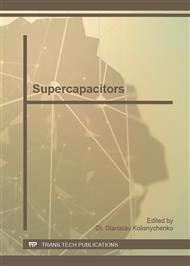p.3262
p.3266
p.3270
p.3276
p.3281
p.3285
p.3289
p.3294
p.3299
Solar LED Intelligent Lighting Systems Based on Internet of Things and New Energy Storage System
Abstract:
Recently, solar LED lighting systems are widely used because of their energy-saving and environment friendly characteristics. But there are also some key problems in current solar LED lighting systems, such as follows: First, the lifetime of lead-acid battery is too short so that the whole system lose efficacy soon; Second, current solar LED lighting systems usually are isolated systems, so its controllability is worse. This paper propose a new solar LED intelligent lighting systems based on Internet of Things and Supercapacitor ,which can tackle these two problems better, so the solar LED intelligent lighting systems will advance applications of solar LED lighting systems.
Info:
Periodical:
Pages:
3281-3284
Citation:
Online since:
November 2014
Authors:
Keywords:
Price:
Сopyright:
© 2014 Trans Tech Publications Ltd. All Rights Reserved
Share:
Citation:



